| ○ | Dagger | D sharp or puncturing damage |
| ○ | Heavy Mace | D blunt damage |
| ○ | Shortbow | DD puncturing damage |
| ○ | Fire Bolt | DD fire damage |
Crossroads MVP
Conflicts – Combat
 Actions
Actions
In Combat, each character is given 2 Actions per turn. Actions are divided into Single Actions, Double Actions and Other Actions.
This is explained further in the Actions — Combat Actions section.
Attacking
Attacking is any action that targets an Opponent. This is done as part of an Attack, Quick Attack, or a Charge Action.
Spells and other effects that target an opponent can be cast as an Attack or a Quick Attack.
Reactions
At certain times, a character will want to React to an Opponent, letting them act on the Opponent's turn. This might be triggered by a Ready Action, but also from a Great Success [2] or a Successful Avoidance. Spending Fate Die and Momentum can also allow a Reaction when the player wishes.
If a player makes a Reaction, they can make a Single Action or a Double Action during the opponent's turn, but they lose the same number of Actions on their next Turn.
Reaction Example:
 Attacking
Attacking
Attacking involves Making Attacks and Avoiding Attacks.
Making Attacks
The first step of an attack is the Attack Hit Roll. The player rolls 3d6 and adds the various modifiers. If an NPC is making the attack, they might use a static value. This helps speed up the game.
The modifier used by players is based on the Statistic that they select. Melee attackers can focus on Speed, Skill, or Strength. Ranged attackers can choose Precision, Prowess, or sometimes Power.
Before making an Attack, players might also choose a Stance that might similarly affect their actions.
- Attack Hit Roll: 3d6 + Statistic + Modifiers
- Melee
- Ranged
- Stances
| ■ | Strength: | [b]rawn | ■ | Speed: | [a]gility |
| ■ | Skill: | [d]exterity |
| ■ Certain Weapon Skills may affect these, or allow another Statistic to be used. | ||
| ■ | Precision: | [p]erception |
| ■ | Prowess: | [d]exterity |
| ■ | Power: | [w]illpower |
| ■ Power may usually only be used with Bolt spells. | ||
| ■ | Basic: | No effect |
| ■ | Defensive: | Gain a1 on Avoidance Rolls and d2 on Attack Rolls |
| ■ | Offensive: | Gain a1 on Attack Rolls and d2 on Avoidance Rolls |
| ■ Characters use the Basic Stance if not specified. | ||
Certain Paths, such as the Path of Shooting or the Path of One-Handed Fighting may apply additional Modifiers to certain attacks.
See also Additional Combat Modifiers below.
Avoiding Attacks
The next step of the attack is the Avoidance Roll. This is rolled by the target of the attack. They roll 3d6 and add modifiers like any other Opposed Skill Roll. Characters may only make 1 Avoidance Roll per attack.
Characters must be aware of attacks in order to avoid them, and if a character is unable to make an Avoidance Roll, they might automatically Miss (−1).
- Avoidance Roll: 3d6 + Statistic + Modifiers
| ○ | Dodge: | [a]gility |
| ○ | Parry: | [d]exterity |
| ■ Requires a weapon. | ||
| ○ | Block: | Shield Value (SV) |
| ■ Requires a shield or other object to block with. | ||
| ○ | Resist: | [w]illpower or [b]rawn |
| ■ Usually given by the ability. | ||
— Successful Avoidance Rolls
If a character rolls a Hit (1) or a Strong Hit (2) on an Avoidance Roll, and the Attack is reduced to a Failure [−1], this is s Successful Avoidance Roll and there may be additional effects.
- Momentum Gain Momentum.
- Path Certain Paths might have additional effects.
- Reaction Make a Reaction.
— Multiple Avoidance Rolls
Characters may make multiple Avoidance Rolls of the same type each turn, but gain d1, increasing on each additional Roll.
This is counted separately for each type of Avoidance Roll.
Avoidance Rolls Example:
An elf attempts to Dodge an attack, rolling 3d6 + [a] and any modifiers.
If the elf attempts to dodge two attacks, they gain d1 on the second attempt.
If the elf attempts to dodge three attacks, they gain d1 on the second attempt and d2 on the third roll.
If the elf is attacked three times and attempts to dodge only two and parry the third, they gain d1 on the second Dodge roll but the Parry is not affected.
These modifiers mean that it is best to use more than one Avoidance Roll if possible.
— Countering Attack Rolls
Certain Attack and Avoidance Rolls might counter one another. Whether a PHRASE THIS BETTER
This is an optional rule to add additional advaned choices to combat encounters.
See the table below:
| Melee | Strong | Neutral | Weak |
| Dodge | Skill | Speed | Strength |
| Parry | Strength | Skill | Speed |
| Block | Speed | Strength | Skill |
| Ranged | Strong | Neutral |
| Dodge | Aptitude | Accuracy |
| Block | Accuracy | Aptitude |
Countering Attacks Example:
A Dwarf and an Elf are sparring. The Dwarf attacks the Elf using [b], fighting with STRENGTH. The Elf DODGEs. As Dodge counters STRENGTH, the Elf gets +1 to her Dodge roll.
The Elf darts away and throws a dagger at the Dwarf, using [p], Precision. He Blocks with a shield, a NEUTRAL response.
Attack Result
If the attack hits, the Attacker may choose what happens. Typically, this will just deal damage, but if the Attacker wishes, they may instead perform another action such as a Combat Manoeuvre.
|
Combat Order Quick Summary |
||
| |
Declare Action: | Say what you want to do. |
| Describe Action: | Roleplay how you do it. | |
| Decide Statistic: | Pick the right stat. | |
| Target's Reaction: | What might they do? | |
| Roll: | Let the dice help! | |
| Resolve Effects: | Continue the fiction. | |
|
Combat Actions To be done on your turn |
| Every character gets TWO ACTIONS on each turn. |
|
Single Actions The following only use ONE Action. Move Quick Attack Cast Spell Assist Use Item Reload |
|
Double Actions The following use TWO Actions. Attack Charge Run |
 Combat Manoeuvres
Combat Manoeuvres
There are a number of Combat Manoeuvres that can be performed on a character. These may be declared as part of the attack, or might be possible as the opportunity arises as part of the attack, typically as a benefit from your Attack Result.
Combat Manoeuvre Examples:
- Reposition
- Disarm
- Trip
- Hinder
- Sunder
- Push
- Pull
— Manoeuvre Effects
Below are some example effects from possible manoeuvres that characters can perform:
- Reposition
- The target is moved, or the character moves around the target.
- Roll: [d]/[a] vs. [d]/[a]
- This is likely to be the most common Manoeuvre.
- Disarm
- The target loses their weapon and is Disarmed.
- Roll: [d] vs. [d]
- Trip
- The target falls Prone.
- Roll: [d]/[a] vs. [a]
- Hinder
- The target gets Disadvantage on a certain Action.
- Sunder
- The target's equipment is Damaged.
- Roll: [b] vs. [a]
- Push
- The target is moved further away in a certain direction.
- Roll: [b] vs. [b]/[a]
- Pull
- The target is moved closer to the character. They may be Grappled.
- Roll: [b] vs. [b]/[a]
— Manoeuvre Examples
Basic Manoeuvre Examples:
An Elf attempts a Combat Manoeuvre against an Orc.
The Elf wants to Disarm the Orc, hoping he will drop his Axe.
The Elf rolls [d] and the Orc rolls [d] as an Opposed Roll.
If the Elf Succeeds, the Orc will be Disarmed, but if the Elf Fails, they might drop their own weapon.
A Dwarf attempts a Combat Manoeuvre against a Bandit.
He tries to to Trip the Bandit, before they can escape.
The Dwarf can choose between using [d] or [a], and the Bandit uses [a] to avoid.
The Dwarf might be able to slow the Bandit or even knock them Prone.
Attack Benefit Examples:
An Elf scores a Great Success against an Orc.
In addition to the normal attack, they are able to perform a Manoeuvre.
They decide to Push the Orc, creating distance so the Elf can escape next turn.
The Elf does not need to roll because it is part of their original Attack.
The Elf will get Advantage on their Disengage Action next turn.
Alternatively, a Dwarf scores a Compensating Failure against a Bandit.
Instead of dealing damage as they had intended, they are able to perform a Manoeuvre.
They decide to Reposition so the Bandit is between the Dwarf and the Bandit's Ally, a vicious Thug.
The GM decides that this is a small enough Manoeuvre and the Dwarf doesn't need to roll.
If the Dwarf had chosen something more difficult, such as Disarm, they might have been asked to roll once more, or the action would only partly succeed, giving the target Disadvantage on their next turn.
 Dealing Damage
Dealing Damage
In some Health Systems, a damage dice might be given for the attack along with other modifiers. However, this MVP Version is designed around the Narrative Health System which uses static damage and is detailed in Health Systems below.
— Damage Types
Certain damage will have a specific type. These may affect enemies, armours, or other things differently.
For example, Characters may have Resistance or Weakness against certain Damage Types. See the List of Damage Types for more information.
- Examples:
—  Non-lethal Damage
Non-lethal Damage
Non-lethal damage is treated like other types of damage, reducing Health. However, non-lethal damage expires after a certain amount of time, usually a Short or Medium Duration. This is up to the GM.
If a character suffers too much non-lethal damage, they will be knocked Unconscious. In addition, a character can lose [h]ealth due to both non-lethal and other damage, and if they are put Out of Action, they will typically be knocked unconscious.
Some creatures are immune to non-lethal damage, such as Undead.
Additional Combat Modifiers
Certain modifiers may also affect Attack Rolls or Avoidance Rolls.
— Advantageous/Disadvantageous Position
If a character is in an Advantageous Position, they might gain Advantage (usually a1) on their Attack or Avoidance Rolls. Similarly, a character in a Disadvantageous Position might gain Disadvantage (usually d1) on their Attack or Avoidance Rolls. This will usually be set by the GM.
However, one character being in an Advantageous Position does not automatically put their opponent in a Disadvantageous Position.
— Obscured Targets
If a target is obscured by an object, terrain, or by smoke or mist, Attackers gain Disadvantage (usually d1) on their Attack Rolls. Alternatively, a Defender that is obscured, behind, or even just near cover might gain Advantage (usually a1) on Avoidance Rolls.
However, if an Attacker is obscured from the Defender, the Avoidance Rolls might gain Disadvantage as they struggle to see the incoming attacks.
This will usually be set by the GM, and might only affect certain Attack Rolls or Avoidance Rolls.
— Additional Combat Modifier Examples
Advantageous/Disadvantageous Examples:
A Dwarf fights an Orc on a slope, with the Orc fighting from the high-ground.
The Orc is in an Advantageous Position from the added height.
This means the Orc gets Advantage on Attack Rolls.
The Dwarf is in a Disadvantageous Position because they are literally fighting an uphill battle
This means the Dwarf gets Disdvantage on Attack Rolls.
The Dwarf might want to try a Reposition Manoeuvre to try and get to a better position.
Obscured Target Examples:
An Elf aims a bow at a Bandit hiding behind a barricade.
This attack will have Disdvantage based on the size of the barricade, and how much of the Bandit is hidden.
If the Bandit is only near the cover, they might gain Advantage on Dodge Avoidance Rolls.
A Noble fights a vicious melee against an Orc raider in a burning inn.
The smoke and heat from the fire blurs the vision of both fighters as they trade blows.
They both gain Disdvantage on Attack Rolls.
A Dwarf fights a hidden archer in a forest.
They know the archer is attacking from the trees, but the Dwarf cannot see their attacker.
The Dwarf is able to make Avoidance Rolls, but gains Disdvantage against these attacks.
 Momentum
Momentum
Momentum is a mechanic where points are built up during combat and can be used to support further actions. Successes build upon each other and help to keep the action flowing.
Each player has their own Momentum to spend, built up through their own actions. Players can track their points on a d6 for convenience.
— Building Momentum
Build with successful actions:
- Success Gain Momentum with a Great Success (2).
- Criticals Gain Momentum with a Critical Hit.
- Avoidance Gain Momentum with a Successful Avoidance.
- Compensation Gain Momentum as a benefit for failure from a Compensating Failure (0).
- Victory Putting an enemy Out-of-action grants Momentum set by the GM.
- Enemies of greater Threat might award additional Momentum.
- Path Certain Paths grant Momentum for specific actions.
- For example, the Path of Bashing grants Momentum if an attack damages AV.
— Losing Momentum
Lose as a result of failure:
- Failure Lose Momentum from Failure [−1].
- Strain Lose Momentum as a complication from a Partial Success [0].
- Defeat All Momentum is lost if the character is put Out-of-action.
— Spending Momentum
Can be spent for certain advantages, similar to Fate Dice:
- 3 - Bonus Gain +1 to the Action Roll.
- 4 - Reroll Re-roll a single die.
- 5 - Advantage Gain a1 on the roll.
- 6 - Fate Die Refresh a Fate Die.
- X+1 - Share Give X Momentum to an Ally.
— Momentum Examples
Building and Losing Momentum:
A Dwarf is fighting some Goblins.
The Dwarf scores a Critical Hit against a Goblin, putting it Out-of-action.
Momentum is scored for the Critical and for the Victory.
The Dwarf gains 2 Momentum.
Another Goblin attacks the Dwarf, and the Dwarf makes a Parry Avoidance Roll.
Scoring a Partial Success [0], the GM offers to let the Dwarf avoid the hit for 2 Momentum with a Partial Success [0], or take the hit and score 1 Momentum with a Compensating Failure [0].
Spending Momentum:
The Dwarf's Ally, an Elf, is shooting a bow at the Goblin's leader.
Rolling 4 3 2 + 1 [p], for a total of 10.
This means they're 1 short of a Success [1].
The Dwarf decides to Share their Momentum with the Elf so that the Elf can use Bonus for another +1 to turn their roll into a Success [1].
Conditions
There are a number of conditions that can be applied to characters or certain items in the game:
— Conditions
These Conditions can often be removed by items or abilities.
- Blind Unable to see. Gain Disadvantage on any Action that uses sight.
- Bound Unable to move bound limbs.
- Broken Broken Items cannot be used.
- Damaged Gain Disadvantage until repaired.
- Deafened Gain Disadvantage on any Action that requires hearing. Cannot hear conversations.
- Disarmed Count as unarmed until weapons are retrieved.
- Disoriented Get only a Single Action each turn AND Disadvantage on all actions.
- Empowered Gain Advantage on spellcasting.
- Feared Must act according to Instincts. Will probably drop items and run or hide.
- Grappled Unable to move or act until the Grapple is broken.
- Prone Gain Disadvantage on many Actions, but become harder to hit with ranged attacks.
- Silenced Unable to speak or cast spells. May be able to use non-verbal communication.
- Stunned Unable to act. May lose one or both Actions.
- Unconscious Unable to act. Out-of-Action. May be revived by certain items or abilities.
- Injured Gain Disadvantage on any Action that uses this body part.
- Fatigued Reduce Statistics by 1.
- Weakened Reduce Statistics by 1.
- Bleeding Take damage every turn until mended.
- Poisoned Suffer from an effect until cured.
Distance in Combat
Range
![]() All ranges will be given in rough approximations. These are defined below, though these may be changed if you wish. A rough rule is that each range is double the previous range.
All ranges will be given in rough approximations. These are defined below, though these may be changed if you wish. A rough rule is that each range is double the previous range.
Ranged Weapons may be used outside of their regular range, though they may receive Disadvantage on any Attack Rolls.
 Melee Ranges
Melee Ranges
If a character is in Melee Range, they are Engaged. Engaged characters stay in Melee Range of one another unless they try to Disengage.
Any character within Range of an Enemy melee weapon is said to be Engaged and may be vulnerable to attack if they try certain actions.
Disengaging Example:
An Elf tries to Disengage from an Orc.
The Orc makes a Quick Attack Reaction as the Elf moves away.
This Reaction is free because they are Engaged, though they will lose one Action in their next turn as normal.
If the Orc succeeds in the attack, they can choose between dealing damage or hampering the Elf's escape, hopefully keeping them Engaged.
 Movement in Combat
Movement in Combat
In Combat, Characters use Narrative Distance.
— Narrative Distance
Characters typically act warily in combat and move in a more guarded manner. A single Move Action allows a character to change their distance to a target by roughly one Range Increment. Eg. Going from Close to Medium Range, or Close to Melee Range.
A character that Runs may move two Range Increments.
Because distances are generalised, two characters might be at the same Range Increment from a target even though one of them is closer. These distances are generalised for simplicity.
Narrative Distance Movement Examples:
A Noble is at Far Range away from a door.
If he decides to Move towards the door, he moves to Close Range.
If he decides to Run towards the door, he moves to Adjacent Range or Melee Range.
Because the door is not a combatant, he can just choose how far away from the door he stops.
An Elf is at Close Range from an enemy Orc and decides to move away.
If they choose to Move, they move to Far Range.
If they choose to Run, they move to Very Far Range.
If they decide to Move instead of Run, they can make a Quick Attack against the Orc with a Ranged weapon, though they might receive further Disadvantage because they will be trying to attack a target behind them.
Multiple Targets Example:
A Dwarf is at Far Range from an enemy Orc and an allied Elf.
The Orc and the Elf are at Close Range from one another.
The Dwarf can choose to Run towards the Elf, the Orc, or somewhere in-between.
If the Dwarf Runs towards the Elf, they will be Close to the Orc and Adjacent to the Elf.
If the Dwarf Runs towards the Orc, they will be Close to the Elf and Adjacent to the Orc.
Because they are enemies, they will both become Engaged in Melee.
Finally, the Dwarf can choose to move between both the Orc and the Elf.
This will put him Close to both, but if the Orc tries to Move towards the Elf, the Dwarf will be in the way.
Even though the Dwarf is closer to the Orc than the Elf is, they are all considered to be at Close Range from one another because the distances are generalised.
Charging an Enemy
Characters may Charge at an Enemy in order to Move and Attack in one turn. See the Actions Page for more information on Actions.
Charging an Enemy Example:
An Orc is at Close Range from a Dwarf.
The Orc Charges at the Dwarf to attack in melee with an axe.
The Orc makes a Move Action towards the Dwarf, moving to Melee Range and becoming Engaged in Melee with the Dwarf. He then makes an Attack Action against the Dwarf.
See Actions - Movement for more information on Movement.
 Taking Damage
Taking Damage
Health Systems
This MVP Version is designed around the Wound Health system detailed below.
— Wound Health
- Characters use a list of Health Types
- Basic: HHH HH H
- If a character takes a Minor wound, D, mark off H.
- If a character takes a Major wound, D, mark off H.
- If a character takes a Mortal wound, D, mark off H.
- If a character cannot mark off an appropriate wound, they should instead mark a more serious wound.
- If a character takes a Major or Mortal Wound, they are also Injured.
- If all wounds are marked, that character is Out of Action.
- If a character must mark a Wound, but has no space for that type or greater, they are Out of Action.
- For example, if a character must mark off D, but has only H, the character is Out of Action
- Damage is tagged to deal a certain type or amount of damage.
- An Orc Warrior has the [h] below.
- They also have Light Armour giving A.
- HHH HH H A
- Armour Value (AV) is treated like Health.
- The Orc Warrior takes three Minor Wounds (DDD) and a Major Wound ( D ).
- They cannot use the A to absorb the Major Wound ( D ). It can only absorb Minor Wounds (D).
- Because they took a Major Wound ( D ), they are Injured and suffer a penalty to one of their Statistics.
- In this case, their leg is wounded and they reduce [a].
- With the remaining damage, they choose to remove A first, and the remaining DD is dealt to their Health.
- XXH XH H X
- If you can't mark off an appropriate wound, mark off a higher wound.
- The Orc Warrior takes another Minor Wound.
- As there are no Minor Wounds ( H ) remaining, they must mark off a Major Wound( H ) as if a Major Wound ( D ) had been taken.
- They are once again Injured and suffer a penalty to a Statistic. This time their arm is cut and they reduce [d].
- XXX XH H X
- Healing Kits may be used to heal wounds.
- The Orc Warrior uses a Healing Kit and manages to heal HH.
- Each H allows them to heal H or turn X into X.
- Because they have no H, they would need to heal H before reducing D into D
- This means they can heal HH or H.
- They decide to heal HH.
- XHH XH H A
- Armour Kits may also be used to repair Armour.
- More information on healing can be found below in Character Recovery.
 Character Recovery
Character Recovery
There are a number of ways for Characters to recover from damage taken and other effects.
—  Magical Healing
Magical Healing
Magical Healing, or Mending, is a partial solution to assist characters injured in battle. This magic can reduce the wound severity, but cannot heal the wound entirely. This can sometimes affect even Weakened and Fatigued.
—  Healing Kits
Healing Kits
Healing Kits contain bandages and other supplies to treat wounds. When used, they heal for a set amount of Health. Characters applying a Healing Kit must roll a Skill Check with the result affecting the amount healed. Characters applying a Healing Kit to another Character gain Advantage on the Skill Roll.
With Narrative Health, the base value is H.
The Success Value of the Skill Roll may add or remove H and can cause this to range from 0 to HHH.
Instead of healing H, you may reduce H damage to H, or H damage to H.
Characters can only be affected by a Healing Kit once per day, though as with many rules, this is up to the GM and may be agreed upon with other Players.
—  Potions
Potions
Alchemical Potions may be used to grant Characters additional temporary Health. Like Magical Healing, Potions only last for a limited duration, intended to keep a character fighting rather than truly heal them. Most Potions work more like combat stimulants or painkillers and some potions may be poured on wounds to staunch bleeding.
Potions are designed to keep characters in the fight, but they might also help characters last long enough to receive other forms of Recovery.
Pending GM permission, unconscious Characters might be forced to imbibe potions to regain consciousness but any character who was Out of Action will be so again once the Potion expires.
—  Bedrest
Bedrest
Characters that rest for an entire day, with sufficient food and water, heal for a small amount. This amount is increased if they receive medical attention from a Medical professional or Healing Kits. They will also recover from all non-lethal damage.
With Narrative Health, characters are healed for H per day. Also, any Healing Kits used gain additional Advantage on the Skill Roll, but other rules still apply.
Instead of healing H, you may reduce H to H, or H to H
 Out of Action
Out of Action
A character is Out of Action when they are unable to act. There are many methods for taking a character Out of Action:
- Running out of [h]ealth.
- Having any Statistic fall below −3.
- Succumbing to Weakened.
- Succumbing to Fatigued.
- Taking more non-lethal damage than remaing [h].
- Certain poisons, potions, spells, or other effects.
Non-Player Characters (NPCs)
When an NPC is ![]() Out of Action, they usually die.
Out of Action, they usually die.
However, NPCs are typically knocked Unconscious if they suffer non-lethal damage. Other NPCs may be knocked unconscious if the character is important or the players want to try and take them alive. This is mostly up to the GM.
Captured NPCs might require Healing unless non-lethal damage is used.
Player Characters
If a player character is taken Out of Action, they are knocked Unconscious. They may be revived at the end of the combat. Enemies will usually ignore unconscious characters, though some may try to capture them or even eat them. Unconscious characters may not act until they are revived by another character.
If the players do not rescue the unconscious character, because they had to flee or they were captured, they may have to rescue them later or sometimes the character might even be killed. This is up to the GM.
If the entire party is knocked unconscious, they may be killed. However, typically they will be captured. When captured, they may be taken as prisoners and need to: escape (alone or with the help of others), bargain for freedom, or be ransomed or rescued by other characters. In especially rare cases, the party might be rescued by other special characters instead of being captured.
Special Creatures
Certain creatures cannot be knocked unconscious. They may be immune because they are a construct or other creature. In these cases, these creatures are usually killed or destroyed when they run out of health, though they may be rebuilt or revived later.
Very rarely, certain creatures cannot be killed at all. These characters will usually have special rules for what happens when they run out of Health.
 Instant Death
Instant Death
If a character takes damage from a single source that is greater than their [h], they usually die instantly and are not knocked unconscious. As always, this is up to the GM.
Certain other causes of death, such as decapitation or being crushed or anything else that causes certain death, will also result in death rather than being knocked unconscious.
Even so, see The Most Important Rules.
 Ending Combat
Ending Combat
Conflicts will end automatically if there is only one (or fewer) Teams left in the Conflict. There are a number of ways for a Team to leave a Conflict.
NPCs will typically Flee or Surrender if they are outnumbered, injured, and/or their leader is Out of Action.
Surrender
At any point, one Team in a conflict can Surrender and if it is accepted by their opponents, that Team will leave the Conflict.
Fleeing
Certain foes may try to run if they fear they are losing a Conflict. If a team has no characters In Action that are not fleeing, that Team will leave the Conflict.
Submission
If every character in a team is taken Out of Action through loss of [h]ealth or other effects, that Team will leave the Conflict.
Capture
If every character in a team is unable to act due to spell effects or is Bound, that Team will leave the Conflict.
 Next Step
Next Step
After understanding Combat, you can move on to the Settlements section.